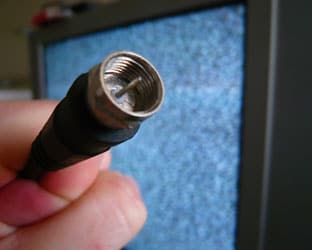Manufacturers and broadcasters had already been moving forward with the preliminary technical standard for Mobile Digital Television, but now the standard has been finalized by the Advanced Television Systems Committee (ATSC). NAB TV Board Chairman Paul Karpowicz declared that the new standard “ushers in the new era of digital television broadcasting” for consumers on the move.
Mobile DTV deployment has been on a fast track since the “candidate standard” was adopted last December. New devices and roll-out plans by broadcasters were hot topics at the April NAB Show in Las Vegas. But Friday’s formal announcement of the standard adoption by ATSC means that everyone can move forward knowing that the technical specs are set in stone.
It was clearly a cause for celebration.
“Development and adoption of the ATSC Mobile DTV Standard is a major milestone in the ongoing evolution of digital television. We have been fortunate to have strong and active industry support, including thousands of person-hours of technical volunteers, for this work which enabled us to develop the standard in an efficient manner,” said ATSC President Mark Richer.
“As a founding ATSC member, CEA congratulates ATSC on achieving this new standard, which will help chipmakers and equipment manufacturers proceed with product development and deployment. With the successful digital television transition now behind us, the ATSC Mobile DTV standard gives broadcasters an opportunity to provide consumers with the next generation of compelling over-the-air content,” declared Gary Shapiro, President and CEO of the Consumer Electronics Association.
“This will introduce the power of local broadcasting to a new generation of viewers and provide all-important emergency alert, local news and other programming to consumers across the nation,” said NAB TV Board Chairman Karpowicz, who is President of Meredith Broadcast Group.
“Local television broadcasters may now move forward with a uniquely local mobile broadcast system. Not only will this provide a new venue for watching local news and sports, it will create a critical platform for emergency communications,” said David Donovan, President of the Association for Maximum Service Television (MSTV).
“I congratulate ATSC for its remarkable achievement in bringing this standard to fulfillment. Mobile DTV utilizes the same digital spectrum that local TV stations use to send beautiful HD programming to the nation’s living rooms. With adoption of the ATSC Mobile DTV standard, small-screen versions of that programming and other services also will now be available over mobile devices,” said Brandon Burgess, President of the Open Mobile Video Coalition (OMVC) and CEO of Ion Media Networks.
To mark the occasion, OMVC Friday demonstrated the services enabled by the new standard during a Mobile DTV briefing for government officials and others on a bus traveling around Washington, DC. Seven local TV stations transmitted live local news, weather, sports and favorite programs to Mobile DTV compatible devices, including mobile phones, laptop computers and netbook PCs. Senior representatives of the participating DTV stations, ATSC, the Association for Maximum Service Television (MSTV), the NAB and technology companies participated in the dialog about the new standard and the new mobile services it will support.
As co-developer of the technology at the heart of the ATSC Mobile DTV standard, LG Electronics issued a statement applauding the ATSC action and declared that mass production is under way of the LG2160A semiconductor chip that LG and other manufacturers will use for their new portable DTV devices.
RBR-TVBR observation: Sure, the Internet has lots of new opportunities for broadcasters – and they should be pursued. What is especially important about Mobile DTV is its uniqueness. Only television station licensees have the infrastructure to deliver Mobile DTV to the public.
That means that TV stations control the pipeline and they alone can deliver free, over-the-air Mobile DTV to consumers. The stations themselves will be able to monetize content that they create, but it also creates unlimited opportunities to partner with other content creators who want to reach the American public on the move with their new mobile devices.
Share YOUR COMMENT below w/ all in the broadcasting media




